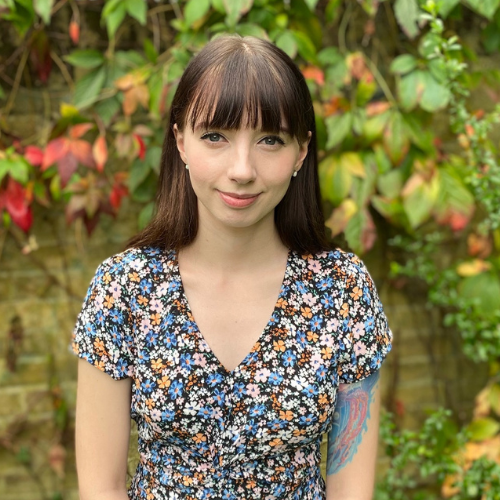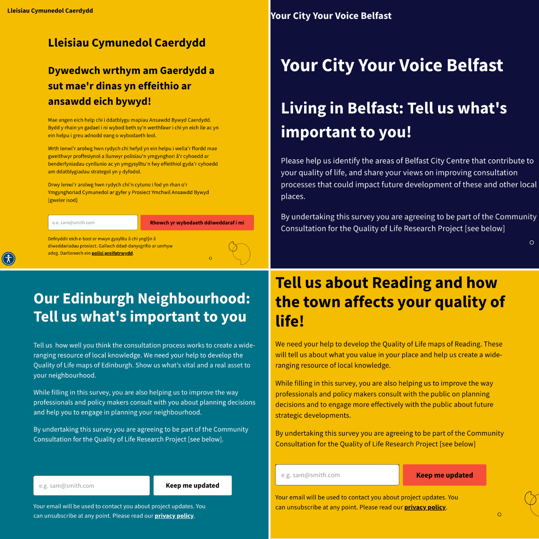Five things we learned from the Festival of Place: Social Impact 2023

By Charlotte Cooper | 13/03/23 15:31
4 min read
We recently had the pleasure of attending Festival of Place: social impact 2023, one of our favourite virtual events of the year! Covering everything from ESG to engagement strategies and successes, we’re here with the five most interesting things we heard from the Spatial Planning for Social Impact session.
This session was presented by Flora Samuel, Professor of Architecture at Cambridge University and hosted by Christine Murray from The Developer/Festival of Place, with Flora sharing her own unique thoughts on how spatial planning has been and should be used for the greatest social impact.
Want the inside scoop on how digital tools are at the heart of this discussion? Just click below and an engagement expert will be right with you…
1. You can’t really level up without knowing what's there in the first place
It may seem like an obvious point, but it’s one to really think about when considering what a place actually needs. For example, what are the people there saying vs what your historic data mentions? It’s the people on the ground that know. This is where the concept of Urban and rural rooms were mentioned.
What’s an Urban room? A term coined by architect Terry Farrell, it’s a physical space where people can come and work on bettering their local area. There is always a focus on our shared built environment - public spaces, streets, neighbourhoods and how they affect the community.
There was a real focus in this session on the work that Urban Rooms have done in bringing the local community closer to planning works- including projects Commonplace have been a part of! Find out more in the other points…
2. The S in ESG has been left out of the conversation (until now!)
ESG. Environmental Social Governance. Even with the UKGBC’s recent framework for defining social value, it’s still tricky to put any kind of metric against it to measure. For example, how would you value your local park by its impact on your well-being? What numbers would you use?
This is something we’ve talked about in depth before. In a recent ESG webinar that we hosted, Phil Higham of RealWorth also pointed out that the S is often “a catch-up area,” and “Doing social value planning properly results in better outcomes, better decisions, better returns and reduced risk.” This came with his own six-step process for measuring.
Find out all about it in the webinar catch-up.
3. Having stop/start urban rooms does not work. You need long-term engagement

Having longer-term engagements in one particular place allows people to understand the full picture of what’s going on in an area and to build up expertise. This is where the Commonplace & CCQOL partnership was mentioned with their series of 2021/2022 Urban Rooms in Belfast, Cardiff, Edinburgh and Reading.
The project started with a review of the literature on public participation in planning in the UK which revealed just how bad a shape it was in. Most notably there was a real issue around consultation and how there was no one checking the quality or inclusivity of the data- both desperately needed for a thorough, and most importantly, useful engagement.
On each website, a Commonplace Heatmap was used to determine what people valued in their area as well while also asking them what their experience of community consultations. This was alongside the physical rooms that each had a unique look and goal to them. For example, as part of their programme on exploring what place means, the Reading room ran a workshop where people were learning English as a second language while the Edinburgh room ran an exhibition explaining local place plans and 20 minute neighbourhoods.
Over the eight months these Urban rooms were created one thing became very clear: There’s a demand by communities for places to debate and create.
4. People are not as ‘hard to reach’ as you might think
It’s a common complaint said by many planners, that they’re missing out on these ‘hard to reach audiences,’ when doing any kind of community engagement. However, this is a term that many have taken umbrage with in recent times- coming down to the specific choice of language. While, on paper, more rural or under-represented groups in planning may seem more difficult to engage with, those at the Cardiff Urban Room took particular issue with the term ‘hard to reach’ and the implications that had for them as people. They wanted to be involved and wanted change, but the words hard to reach put the blame on them for not being easy enough to contact rather than the planners for not doing more to get them involved.
It can be seen at a Welsh assembly event in July 2022 named ‘I am not Hard to Reach’.
As covered on the CCQOL website:
“‘It’s insulting when you are told you are hard to reach,’ said panel speaker Lela Patterson, who has been blind since birth, opened the session by suggesting consultation can be best when simplified to a conversation. ‘Make the effort: don’t be afraid to approach me. Ask me anything.’”
5. There’s a need for consultations to be a hybrid of digital and face-to-face.
This is a concept we’ve been championing since the inception of Commonplace. Digital-led consultations never meant, digital-only. Rather than the blend of the two creates a strategy with the right tools to reach anyone. As was pointed out in the session:
“Much can be achieved online, but a physical space is critical to meet, collaborate, engage, plan and create.”
As we have seen from the success of the Urban rooms, local people have very much enjoyed having a physical space dedicated to their own voices and opinions. Combined with the technology of each Urban Room’s website and a full story was able to be told.
Plus the technology is only getting better! The Welsh Assembly is starting to experiment with people leaving voice notes as a way of contributing to planning consultation, something that a number of Commonplace customers have also been using on their own engagements as an easier and interactive way of leaving their opinions.
NLP (natural language processing) was also used on each website. With this, people could leave qualitative statements - they could write an essay if they wanted to, and technology pulled the words into themes, making it much easier to categorise and tell a more person-led story through the data.
Thanks to the new technology mixed with these in-person events and work, it’s getting easier to extract data and use it for the good of the spaces around us.
What a great session! If you'd like to find out more about Commonplace's work with CCQOL or how a digital-led strategy is here to put the S back in ESG, just click below and one of our friendly team members will get right back to you.
.png)
